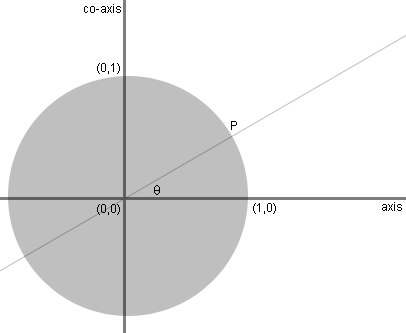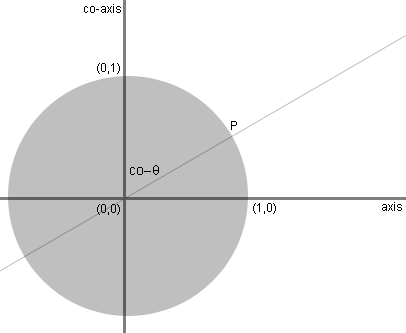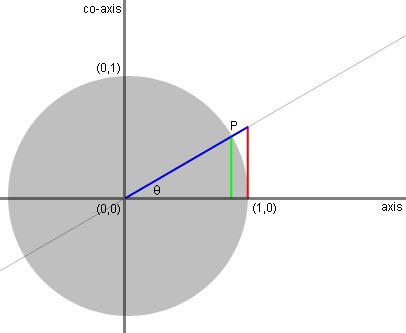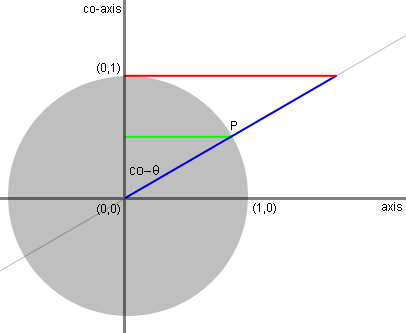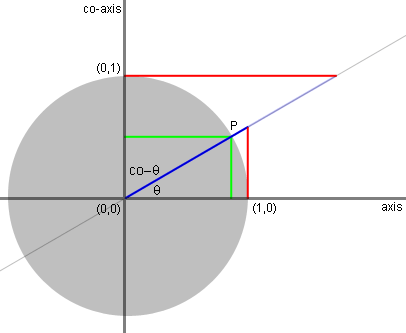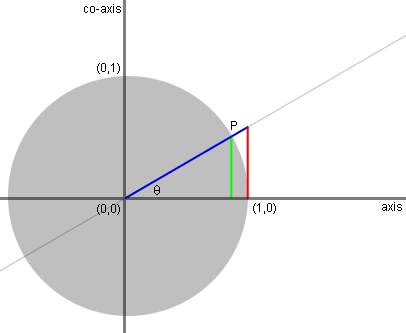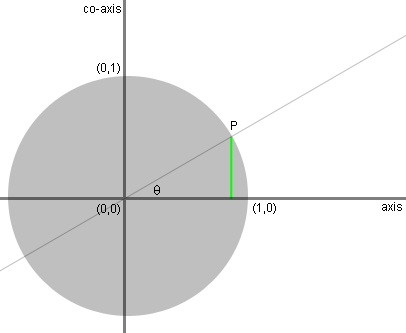
The length of the green line, dropping from
P
to the axis, measures the sine of theta: opposite side of a right
triangle over a hypotenuse of the unit circle. |
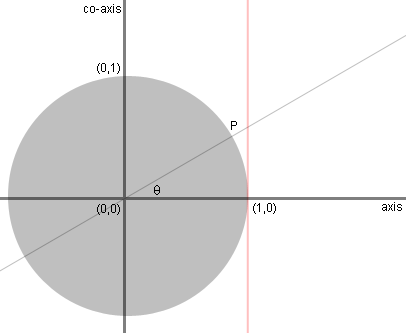
The pink line is a geometric line tangent
to
the unit circle at (1,0) on the horizontal axis. |
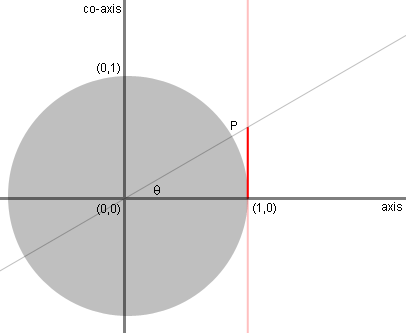
The length of the red line, intercepted by
the
secant line along the tangent line, measures the tanget of theta. |
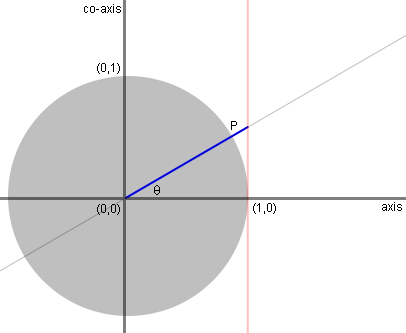
The length of the blue line, intercepted by
the
tangent line along the secant line, measures the secant of theta. |
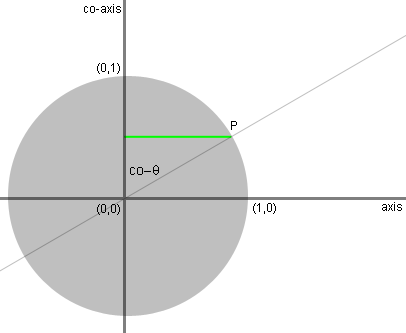
The length of the green line, dropping from
P
to the co-axis, measures the sine of co-theta: opposite side of a
right triangle over a hypotenuse of the unit circle. Hence,
cosine
of theta. |
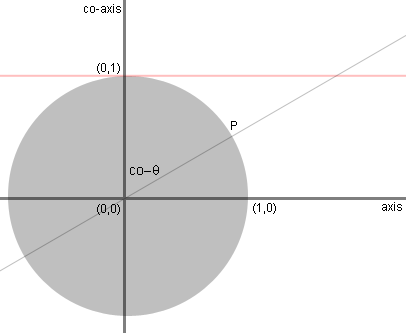
The pink line is a geometric line tangent
to
the unit circle at (1,0) on the co-axis. |
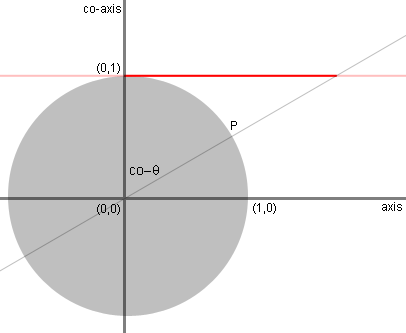
The length of the red line, intercepted by
the
secant line along the tangent line, measures the tanget of co-theta.
Hence, cotanget of theta |
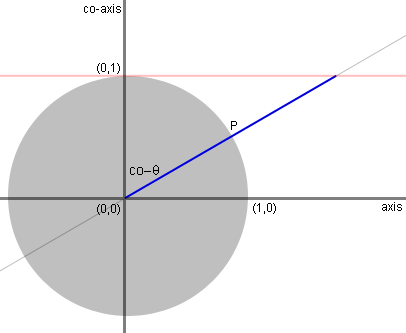
The length of the blue line, intercepted by
the
tangent line along the secant line, measures the secant of
co-theta.
Hence, cosecant of theta. |

